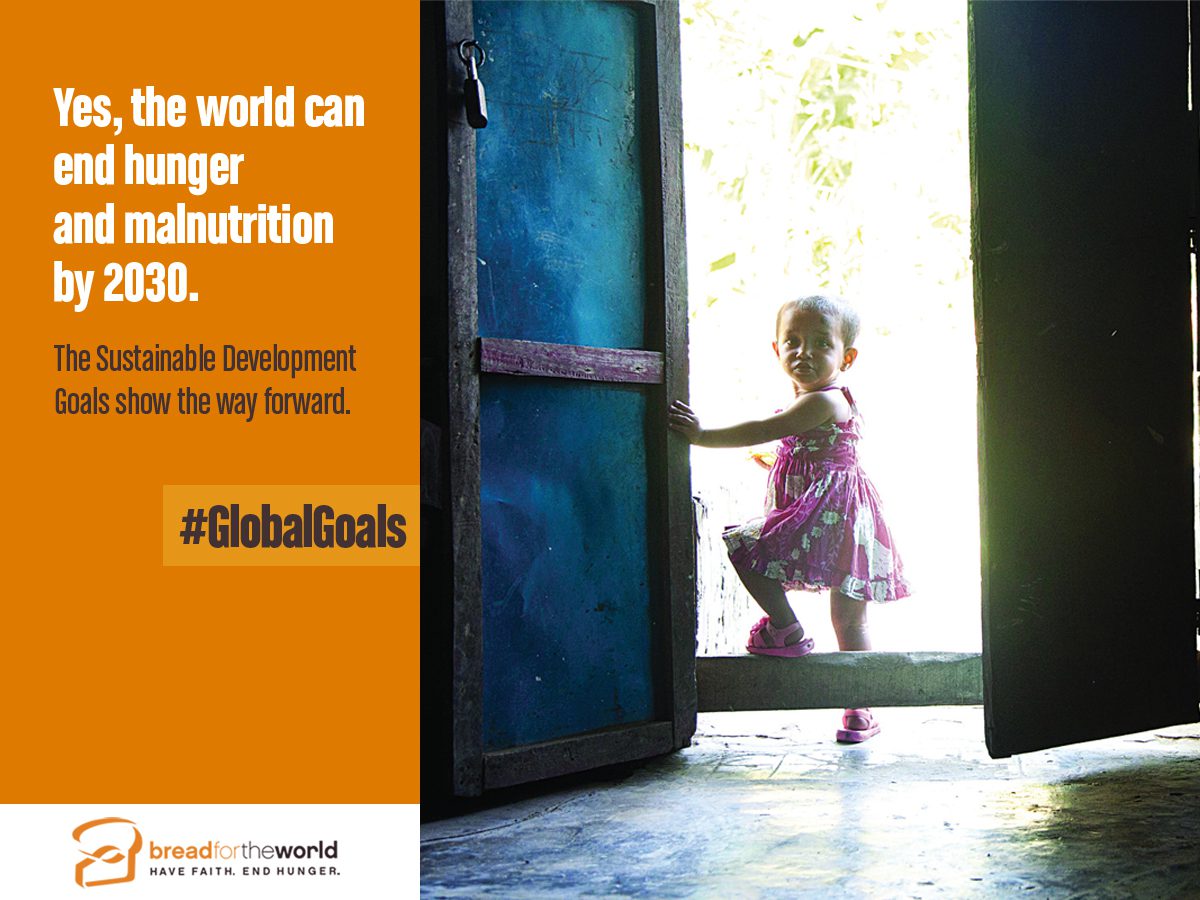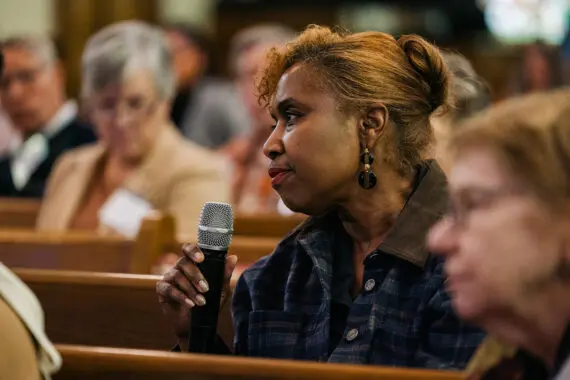By Cynthia Woodside, Bread for the World Institute
How many of us are wearing devices that count our steps, motivating us to walk up the stairs rather than take the elevator so we can close in on the 10,000-steps-a-day goal? And how many of us share our daily progress with family and friends?
Individuals, families, communities, and even countries are all motivated by setting ambitious goals and measuring progress. That is one reason this coming weekend’s adoption of the Sustainable Development Goals (SDGs) by the United States and other members of the United Nations is so exciting and brings new promise to ending hunger.
The SDGs, developed over two years with widespread input from countries, organizations, and ordinary citizens around the world, build on the progress made under the earlier Millennium Development Goals (MDGs). The MDG “era” lasted 15 years, from 2000 to the end of December 2015.
According to the final report, the MDGs spurred “the most successful anti-poverty movement in history.” In fact, the goal of lowering the global rate of people living in extreme poverty (living on less than $1.25 a day) by half was more than met. Extreme poverty fell from 47 percent in 1990 to 14 percent by 2015, an even more impressive achievement when you consider that the world’s population continued to grow in the meantime.
While there is clearly more work to do, the success of the MDGs motivated the world to set new ambitious goals for the next 15 years.
The 17 Sustainable Development Goals (SDGs) will infuse fresh energy into making significant progress on issues of critical concern to Bread for the World members and supporters. The overall vision of the SDGs is to create a world where no one is left behind – no one on the streets of Ferguson or Baltimore, no one in the remote villages of Malawi or in conflict-torn Syria.
The SDGs move us from the “cutting hunger in half” target so familiar to readers of our blog to ending hunger. Bread for the World Institute and our coalition partners have worked for several years to emphasize that ending malnutrition is an essential component of ending hunger. Our work has paid off. Ending malnutrition in all its forms is part of the SDGs. Poor nutrition — leading to deficiencies in essential vitamins and minerals, obesity, or both — is arguably the main symptom of the U.S. hunger problem.
Ending hunger will require progress on multiple fronts, as described in the 2014 Hunger Report: Ending Hunger in America. Ending hunger means ensuring access to sufficient nutritious food, of course, but also requires reducing people’s vulnerability by addressing poverty; racial, ethnic, and gender discrimination; inequality; and disparities in health care, education, and employment.
The latest food-security data released by the U.S. Department of Agriculture (USDA) indicate that more than 14 percent of households, or more than 48 million people, were food-insecure at some time during 2014. One in seven of us did not always have enough money to put food on the table.
Both the longer-term and short-term effects of hunger, poor nutrition, and worrying over when the food will run out have been well-documented in children and adults. Short-term effects range from an inability to concentrate to depression, while longer-term impacts include multiple and chronic health problems, trouble finding and keeping a job, and lower lifetime earnings. Even aside from the unnecessary pain and suffering of so many, the U.S. hunger problem adds billions of dollars to the cost of public safety-net programs and public health care.
Bread for the World is engaging our members, faith leaders, and coalition partners in urging and supporting our elected leaders to prioritize the policies needed to end U.S. hunger by 2030, the SDG deadline.
Concerted efforts at the national, state, and local levels, innovative strategies, adequate resources, and political will have and can result in dramatic improvements.
Are you ready? The next step toward meeting the new goals begins now.
Cynthia Woodside is senior domestic policy analyst at Bread for the World Institute.



